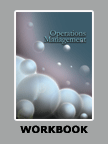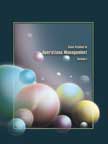Operations at Whirlpool




|
|
ICMR HOME | Case Studies Collection
Case Details:
Case Code : OPER034
Case Length : 15 Pages
Period : 1990 - 2004
Organization : Whirpool Corporation
Pub Date : 2004
Teaching Note : Available
Countries : USA
Industry : Consumer Appliances
To download Operations at Whirlpool case study
(Case Code: OPER034) click on the button below, and select the case from the list of available cases:

Price:
For delivery in electronic format: Rs. 400;
For delivery through courier (within India): Rs. 400 + Rs. 25 for Shipping & Handling Charges
» Operations Case Studies
» Case Studies Collection
» ICMR HOME
» View Detailed Pricing Info
» How To Order This Case
» Business Case Studies
» Case Studies by Area
» Case Studies by Industry
» Case Studies by Company
Please note:
This case study was compiled from published sources, and is intended to be used as a basis for class discussion. It is not intended to illustrate either effective or ineffective handling of a management situation. Nor is it a primary information source.
|
|
<< Previous
"Logistics is the most challenging of all business
processes due to its extreme cross-functional nature and this challenge
increases exponentially in a global environment."
-J. Paul Dittmannn, Vice-President, Whirlpool in 19971.
"We want to get the right product to the customer when
they expect it. While that is a simple set of outcomes, it is an incredibly
complex set of activities that have to be orchestrated all the way to our
suppliers."
-Reuben Slone, Vice-President of Supply Chain, Whirlpool in
20032 .
Introduction
Whirlpool Corporation (Whirlpool) was the world's leading
manufacturer and marketer of home appliances in the 1990s and 2000s.
|
(Refer to Exhibit-I on the
major appliance manufacturers in the world). It led the appliance market in the
United States and South America and was among the top three manufacturers in
Europe. (Refer to Exhibit-II on the appliance industry in the US).
It was also
the largest western appliance manufacturer in Asia. The company was the leading
manufacturer of refrigerators, microwave ovens, washers, dryers and air
conditioners, and marketed its products under the names Kenmore, Sears, KitchenAid, Roper, Inglis and Speed Queen, in addition to the brand name
'Whirlpool'. (Refer to Exhibit-III for Whirlpool's brands and products).
|
|
As a manufacturing company, Whirlpool placed considerable emphasis on
operational efficiency.
|
|
The company
began restructuring its operations in the early-1990s to orient itself
to changing market conditions. As a part of its operational
restructuring, the company set up several cross-functional teams for key
product areas, entered into several agreements with its suppliers based
on their reliability and their ability to assist in product design and
began using Electronic Data Interchange (EDI)3
to communicate with its suppliers.
Almost all the Whirlpool stores around the world were linked with
e-business software. The software linked each of its factories and sales
operations with suppliers and key-retail partners. |
Operations at Whirlpool
- Next Page>>
|
|



